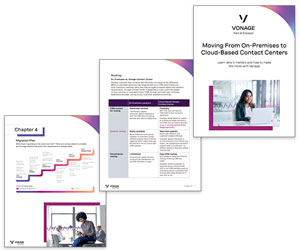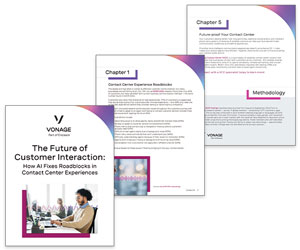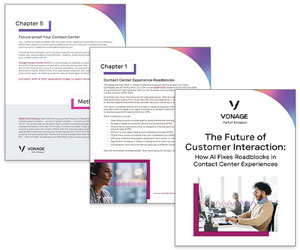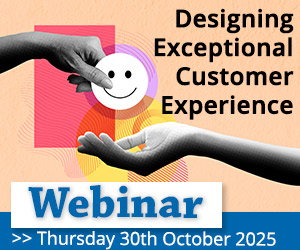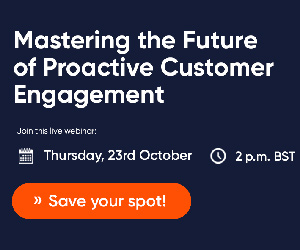Achieving a high productivity level is an ongoing challenge for contact centres. These top tips from our expert panel will help make your workforce more productive.
1. Reward the right metrics
We believe that employee behaviour is undoubtedly linked to what you reward. It is therefore essential that companies think carefully about the metrics that they put in place so that they do not create unhelpful behaviours like agents dumping calls in order to meet targets.
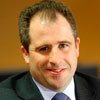
Philip Michell
If employees perceive that metrics are being used inappropriately to constrain their behaviour or that their behaviour is being overly managed, they are quite likely to put their energies and competencies into trying to beat the system.
The triggers for each sale need to be as customer focused as possible.
Philip Michell, Vertex
2. Catch agents doing something right
You can use dedicated software, spreadsheets or whatever metrics and measurements you want, but don’t forget your agents. Make sure you catch them doing something right and let them know! They will appreciate it and you will see a return on your investment in improved morale, better customer service, reduced absenteeism and, potentially, reduced agent attrition.
3. Multi-skill
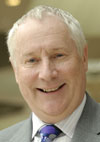
David Jones
There is no one answer to multi-skilling. Different businesses require different set-ups. But without doubt, multi-skilling and moving to larger groups of agents where possible will bring significant productivity gains.
If you have a number of small specialised groups examine whether two or three groups can be cross-trained to make a larger group as productivity benefits can be very significant when combining small groups together.
Where possible the objective should be to move to larger workgroups where high percentages of agents are able to take all types of call, bringing all of their associated productivity benefits.
David Jones, Q-Max Systems
4. Make your metrics work for you
Knowing your own people is crucial; you have so much information about your own people, you should use this information as key levers to success.

David D’Souza
How do you do this? Profile both what makes people likely to be a success and what makes them likely to fail – and who bucks this trend and what is different about their approach. It isn’t one size fits all but it is about creating the conditions where exceptional performance is most likely to happen.
You can then use this data to help your managers understand the key activities and disciplines that make their colleagues successful. Pool and cross-check data as often as possible to find the strongest relationships you can and look for the reason behind them – what do the managers who get their people to perform quickest do? What do the managers who create loyalty do? What do the managers whose team create the best customer experience have in common? People metrics will give you the insight you need for a productive team.
David D’Souza – Organisational Development Manager, CPP
5. Introduce a motivation scheme

Andy Philpott
Motivation schemes that offer staff incentives improve engagement and raise performance. They provide a focus for activity and generate interest, resulting in a good atmosphere and a productive workforce. Improved staff performance supports the attainment of business targets and objectives. This positive impact translates through to the bottom line, generating a good return on investment for the company.
A motivation scheme can be delivered using vouchers or travel rewards as cash bonuses risk being lost in monthly salaries and the value of the reward is therefore lost for the recipient.
Andy Philpott, Marketing Director, Edenred
6. Have the right tools
Increasing productivity is as much about having the right tools as it is about engaging better with your workforce.
For example, while many people still think of diallers as being for outbound contact centres with high-volume calling, they can actually improve productivity and control in managing and measuring outbound activity in an inbound call centre.
I say that because in nearly all contact centres, including those that consider themselves to be purely inbound, around 40 per cent of all calls are outbound. Many still use manual dialling to follow up inbound calls and chase third parties etc., but this is both labour intensive and costly – especially when the number is often not answered, requiring agents to try again later.

Ken Reid
Managers find this difficult to measure.
By linking inbound and outbound activity automatically, diallers help agents keep their promises to call back and maintain a high level of customer service. There are desktop tools to guide the call, support operational processes and capture business outcomes.
Automated diallers provide visible information on KPIs like: who is making the calls, how many they have made, how long each took, after-call administration costs and whether outbound calls are affecting inbound services. Diallers naturally increase productivity – and morale.
Ken Reid, Marketing Director, Rostrvm Solutions
7. Free up your team leaders

Richard Kenny
Team leaders frequently provide a roving support service for their team. If you provide them with wireless headsets, supervisors can roam among their team and provide more personal one-on-one support when away from their desks.
Not only does this mean team managers have the ability to interact with their team more frequently but it also increases first-time call resolution as they are always on hand to provide assistance when needed. An example of this was Sage, who achieved a 37 per cent improvement in productivity as a result of using wireless headset technology to support their employees.
Richard Kenny, EMEA Contact Centre Segment Manager, Plantronics (www.plantronics.com)
8. Complete tasks in a customer-centric way
Many businesses have layers of service based on a tiered billing structure, but they don’t have the ability to differentiate tasks or enquiries based on these service levels. More effective organisation and ‘just in time’ fulfilment mean that multiple service levels can actually be met and people paying for premium service get it – while those accepting basic service aren’t given ‘premium’ treatment.
This approach requires visibility of the entire process to ensure that the back office is connected to the rest of the enterprise. Contact centre agents, as the primary customer interface, need to report on the progress of jobs in the back office; management need the visibility to ensure that the ‘production line’ is delivering on time.
9. Optimise the employee pool

Keith Pearce
A single input management tool that splits tasks into skill levels enables the optimisation of high skills and enables cost reduction for lower-skilled tasks. The highly skilled agents are ‘in-house’ and deal with challenging – yet rewarding – tasks and make a real difference in both value to the business and customer satisfaction.
Lower-skilled tasks are the typical cause of agent churn. It is, therefore, more effective to outsource the fulfilment of these tasks – reducing the cost of training and recruitment, while also optimising the use of in-house employees and boosting their job satisfaction.
Keith Pearce, Senior Marketing Director EMEA, Genesys
10. Make sure your agents have the information they need

Jonathan Grant
It’s often the telephony technology implemented within the call centre that can impede agents’ ability to be productive. Call centre staff must have the correct information to hand to manage challenging calls.
Provide agents with technology that seamlessly allows them to have access to a single central source of information for all customer communication, sharing valuable contact data across an organisation. Inbound calls can also be announced to the agent with a link to the caller’s details and customer data held in a CRM base. The implementation of this style of technology can dramatically improve efficiency and make the workforce more productive.
Jonathan Grant, CEO, NewVoiceMedia
11. Learn to be flexible

Paul Miller
In my experience, the challenge is rarely about personal productivity. More frequently it concerns processes not delivering the right type of work to the right people. This can be addressed by using WFM techniques to really understand where the spare resource is, setting reasonable targets for work completion and being agile in changing the plan.
Every day the forecast will be inaccurate, resulting in some discretionary resource. If you don’t identify and reallocate work it will look like poor productivity. Good management practice ensures that everyone has personal targets which are regularly monitored and reviewed – poor personal productivity is usually a function of a lack of targets and direction.
Good contact centres are living and changing things. Constantly challenging the status quo and involving finance, systems, and personnel in the problem solving will go a long way.
Paul Miller, Associate Director – Contact Centres, Prolog Connect
12. Allow time out
It maybe counter-intuitive, but allowing call centre employees time out of the office and away from the phones can improve productivity.

Mark Brown
For example, automotive clients should consider offering test drives to their call centre employees so they can familiarise themselves with the features and benefits they are tasked with selling.
This experience can bring sales calls to life with real enthusiasm for how a car handles, leading to better results; fewer calls and more sales.
Mark Brown, Managing Director, Contact Centres & Loyalty, arvato UK
13. Offer innovative performance incentives and measure the right things
This one seems a bit obvious as call centre agents tend to be programmed to work toward the metrics they are measured against.
For example, if you only rate agents based on average handle time, they will work hard to ensure they end their calls “on time,” which may, unfortunately, be at the expense of satisfying the customer’s inquiry. If, however, you are a service organisation, first-call resolution should be important to you, regardless of the length of time an agent spends with your customer.
Therefore, in this scenario it’s best to measure that and reward agents who regularly meet or exceed those metrics.
While the rewards needn’t be extravagant (but, if we’re honest, who WOULDN’T like an all-expense paid trip to the Côte d’Azur?), they should be significant and awarded on a regular basis.
You should also structure the rewards in such a manner as to offer ALL agents an opportunity to win. A reward structure that seems to favour a few can, in the end, be more demoralising and detrimental than no programme at all.
14. Facilitate, no encourage, 360-degree feedback
Criticism is a tough pill to swallow for anyone, but a formal programme where you solicit feedback – good and bad – from your agents will only make them, and your operation, better.
Ask them for their honest, unvarnished feedback, without fear of repercussion, and act on it.
Collecting the feedback is one thing, but failing to act on it can often do more harm than good. Your agents are your front-line troops with your customers. They see all the action, so to speak, and are in the best position to tell you what’s working and what isn’t.
Make a commitment to emphasise what’s working well, as well as fix what isn’t.
15. Actively solicit your customers’ feedback
Move beyond the rote, “were you satisfied with this call,” style of customer satisfaction survey and ask your customers what they really think about your call centre.
You might find that the policies you thought were sound business practices are actually sources of customer dissatisfaction and, as a result, your customers may be taking out their frustrations on your agents.
Sound, sensible operational policies benefit customers and companies alike, leading to improved satisfaction for both.
Simon Angove is CEO of GMT Corporation
Author: Jo Robinson
Published On: 30th Mar 2011 - Last modified: 8th Sep 2025
Read more about - Hints and Tips, Andy Philpott, Employee Engagement, Keith Pearce, Ken Reid, Mark Brown, Motivation, Poly, Richard Kenny, Rostrvm, Simon Angove, Staffing, Vonage, Workforce Management (WFM)











